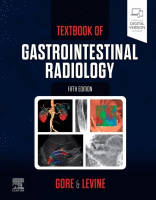Physical Address
304 North Cardinal St.
Dorchester Center, MA 02124

Motility disorders of the esophagus are an important cause of esophageal symptoms, especially symptoms not readily explained by structural abnormalities. This chapter reviews esophageal anatomy and physiology before discussing fluoroscopic evaluation of esophageal motility and major esophageal motility disorders. Normal…

Upper gastrointestinal (GI) tract barium studies can be performed by single- or double-contrast technique. Single-contrast study relies primarily on barium filling and mucosal relief, whereas the double-contrast study is actually a biphasic technique that combines the advantages of single and…

Functional Abnormalities AGING Age-related change in the muscles, tendons, ligaments, cartilages, and nerves that participate in pharyngeal function may alter swallowing dynamics, causing a swallowing disorder. The type of normal swallowing in young patients is found in only about 15%…

The pharynx is the crossroads of respiration, speech, and swallowing. During respiration, the pharynx is an active conduit for the passage of air from the nasopharynx to the laryngeal aditus. During speech, the pharynx functions as a resonating chamber, changing…

Physiology Precipitation of calcareous substances requires an alkaline medium and high local concentrations of ionic calcium. The term metastatic calcification refers to deposition of calcium salts in normal tissues secondary to hypercalcemia and an elevated pH. Although the stomach and…

Even with the widespread availability of cross-sectional imaging studies, abdominal radiography remains a common imaging test in modern radiology practice. Although computed tomography (CT), magnetic resonance imaging (MRI), and ultrasound provide more information about acute abdominal conditions, abdominal radiographs (previously…

From the 1970s to 1990s, the abdominal radiograph traditionally served as the initial radiologic means of evaluating patients with suspected abdominal pathology. Since the early 2000s, however, computed tomography (CT) has become the major imaging procedure in patients with acute…